Schmidt's Newly Refitted Research Vessel Falkor (too) Launched

Schmidt Ocean Institute announced that its newly refitted research vessel has been launched and is ready to be used by scientists worldwide to push the frontiers of deep sea expedition.Funded by Schmidt Ocean Institute founders Eric and Wendy Schmidt, the 110-meter global-class research ship, Falkor (too), was refit at Freire Shipyard in Vigo, Spain, with sea trials taking place off Puerto Rico. It will now embark on a series of expeditions and be available to scientists and technologists globally at no cost in exchange for making their research and discoveries publicly available.
Subsea Discovery: SOI Releases Images from Study of NW Australian Deep Corals

Scientists circumnavigate and map the seafloor of the entire mesophotic (deep water) zone in Ashmore Reef Marine Park.Scientists discovered a sea snake thought to be locally extinct and saw several species such as the great spotted cowrie (Perissersoa guttata) for the first time in the Ashmore Reef Marine Park, off Australia, during Schmidt Ocean Institute's 18-day expedition that concluded this week.A team of scientists, led by Dr. Karen Miller of the Australian Institute of Marine Science (AIMS)…
GC Rieber Delivers Polar Queen to Schmidt Ocean Institute
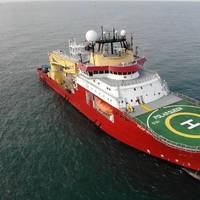
Norwegian offshore vessel owner GC Rieber Shipping has delivered the Polar Queen vessel to new owners Schmidt Ocean Institute. The company announced the sale of the IMR vessel in February."The vessel has today been delivered to the new owner," GC Rieber Shipping said in a brief statement on Tuesday, without disclosing the name of the buyer. U.S.-based Schmidt Ocean Institute has said it acquired the vessel—now renamed Falkor (too)—for use as an oceanographic research ship.The Polar Queen is an IMR / walk-to-work vessel, built at Freire Shipyard in 2011.
SOI: Amidst Pandemic, Seafloor Mapping Zooms Ahead
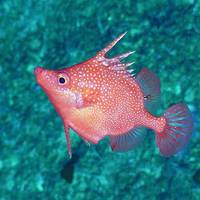
Scientists working remotely with Schmidt Ocean Institute (SOI) have completed a first look at deep waters in the Coral Sea, despite the continuing COVID-19 pandemic. As one of the only at-sea science expeditions to continue operations, the team has discovered the deepest living hard corals in Eastern Australian waters, sighted fish in new regions and identified up to 10 new marine species.SOI’s R/V Falkor spent the 46 days in the Coral Sea Marine Park, one of the largest protected areas in the world.
MBARI Works at Unlocking Ocean Biology
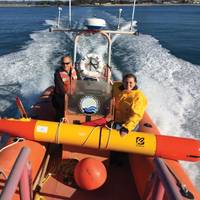
Greater understanding of what goes on in the ocean is starting to become a reality – thanks to growing use of unmanned surface and underwater vehicles and developments in biological sensing. Elaine Maslin takes a look at what a team at MBARI has been doing.Gathering biological data from the oceans remains a significant challenge for oceanographers. Now, an increasing range of unmanned vehicles that are able to work together is becoming available, as is an ability to collect biological data using them.It sounds straight forward…
Underwater Fire - Exploring Submarine Volcanoes
Most of Earth’s volcanoes are in the oceans, yet scientists know very little about them compared to volcanoes on land. Schmidt Ocean Institute’s research vessel Falkor recently completed a 41-day expedition near Tonga, using cutting-edge technology to map, view, and sample underwater volcanoes while sharing observations with the public using real-time video streaming and chat programs. Findings include detecting widespread evidence of deep sea explosive volcanism, observing one of the rarest volcanic rock types on Earth, exploring the largest known dacite lava flow on our planet, and discovering three new hydrothermal venting sites.
Unmanned Aircraft to Take Off from Falkor
Research vessel Falkor leaves Darwin today to explore the poorly understood air-sea interactions across the Indian and Pacific Ocean. This research is very important in understanding the ocean’s role in global climate change. The exchange of energy and matter between the atmosphere and the ocean are particularly onerous requirements, and have largely been neglected in climate research. Chief Scientist Dr. Oliver Wurl, from the University of Oldenburg and his international team of scientists from Germany, the United States, and United Kingdom plan to gain new insight during this 31-day expedition. The team of sea surface experts and marine geochemists on the expedition will use newly developed technologies to closely examine the ocean’s role in exchange processes.
“ProteOMZ” Surfaces Findings in Low Oxygen Ocean Waters
Dr. Mak Saito from Woods Hole Oceanographic Institution, along with his research team have just returned from a 22 day expedition, called “ProteOMZ”, aboard Schmidt Ocean Institute’s research vessel Falkor. During this voyage the team implemented the first large-scale deployment of a new protein biomarker technology. The “targeted metaproteomics” approach will be used to diagnose marine microbial populations and their interaction with ocean chemistry. Using underwater pumps, the upper 1 kilometer of the ocean’s microbial microbiome was sampled by filtering 85,000 liters of seawater over a 7,000 kilometers transit from Hawaii to Tahiti.
New Deep-Sea Vents, Volcanic Activity Found in Mariana Back-Arc
Schmidt Ocean Institute’s research vessel Falkor returns from the first ever expedition to systematically characterize the rarely explored Mariana Back-Arc. HAGANTA, GUAM – A diverse team of scientists are returning from a 28-day expedition onboard R/V Falkor that has more than doubled the number of known hydrothermal vent sites in the Mariana Back-arc region. This area, west of the Mariana Trench, is where plate spreading and submarine volcanism are concentrated. Several momentous findings were made, including the discovery of one of the deepest vents ever found. Another important outcome was the discovery of an extremely rare recently-erupted underwater lava field that is likely only a few months old.
Scientists Produce Data from Largest Single Volcano
Tamu Massif is a volcano the size of New Mexico and lurks 6,500 feet beneath the surface of the Pacific Ocean. During their 36 day expedition, the science team undertook a survey of immense proportions mapping an area nearly one million square kilometers in size. Not only were they able to gather new high-resolution acoustic imagery of this little known volcano, but they also collected 1.7 million magnetic measurements to better understand how such a large volcano was formed. The rocks of the giant volcano record the Earth’s magnetic field at the time they were erupted, giving scientists clues about the timing and process of eruption. The science team aboard R/V Falkor led by University of Houston marine geophysicist Dr.
First Deep Sea Exploration of the Perth Canyon Begins Today
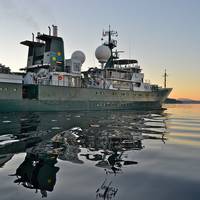
The first deep-sea exploration of the Perth Canyon, Australia's largest undersea valley, will launch today, Phys.org is reporting. The 12-day expedition is backed by Google billionaire Eric Schmidt and will study the conditions and marine life inside the canyon, which researchers hope will provide new information about the effects of climate change. A team of researchers from the University of Western Australia led by Professor Malcolm McCulloch will collaborate with researchers from the Western Australia Museum…
Sunken Fishing Vessel Identified 8,920-ft Down

The Coast Guard has identified a sunken fishing vessel missing since 1972. a remote operating vehicle (ROV) to investigate. The fishing vessel Katmai was discovered in 8,920 feet of water approximately 200 miles offshore. After receiving data of the discovery from BOEM, the U.S. Coast Guard Investigations National Center of Expertise initiated a cold case investigation, the result of which has now been published by the Coast Guard. Oskar Joos, his wife, eight-year-old child and deckhand Clinton Hollevoet departed Mobile for Anchorage, Alaska on the fishing vessel Katmai Feb. 18, 1972.
GOM Mission for New Research Ship
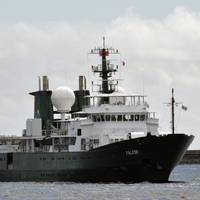
Schmidt Ocean Institute's 'R/V Falkor' to advance studies of artificial reefs, red tides & uncharted regions of the Gulf of Mexico. Scientists with the Harte Research Institute for Gulf of Mexico Studies (HRI) and the College of Science and Engineering at Texas A&M University-Corpus Christi will study the oceanography of the South Texas coast, including influences on the distribution of red tide while aboard the R/V Falkor later this month. The R/V Falkor is being provided by…
Polar Expedition Vessel the Sunken 'S.S. Terra Nova' Discovered
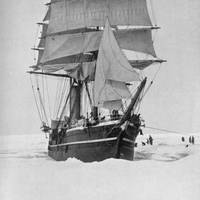
Schmidt Ocean Institute’s flagship 'R/V Falkor' locates the wreck of historic exploration ship off the coast of Greenland. During routine functional performance testing of the mutibeam mapping echosounders on the Schmidt Ocean Institute’s flagship R/V Falkor, the team aboard — including researchers from the University of New Hampshire, Ifremer, and Woods Hole Oceanographic Institution — discovered the S.S. Terra Nova, a whaler, sealer and polar exploration ship that sunk off the southern coast of Greenland in September, 1943, after being damaged by ice.





